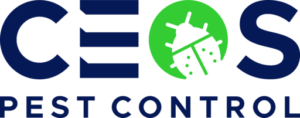Introduction:
Dealing with pests in your home can be a frustrating experience. However, with the right knowledge and tools, you can effectively control and eliminate common household pests on your own. In this step-by-step guide, we’ll provide you with practical tips and expert advice on identifying pests, implementing preventive measures, and using DIY pest control methods. By following these strategies, you can achieve a pest-free home environment without relying on professional services.
Identify Common Household Pests:
The first step in effective pest control is identifying the specific pests you’re dealing with. Here are some common household pests and how to recognize them:
Cockroaches: Look for oval-shaped insects with long antennae and brown or black coloration.
- Ants: These small insects typically form trails and congregate near food sources.
- Bed bugs: Check for small, reddish-brown bugs in mattresses, furniture, and linens.
- Rodents: Look for droppings, gnaw marks, and signs of nesting in dark corners or attics.
- Spiders: Identify various species based on size, color, and distinctive markings.
Implement Preventive Measures:
- Preventing pests from entering your home is crucial in maintaining a pest-free environment. Follow these preventive measures:
- Seal cracks and gaps: Inspect your home for any openings and seal them with caulk or weather-stripping.
- Store food properly: Keep food in airtight containers and clean up spills promptly.
- Maintain cleanliness: Regularly clean your home, including floors, countertops, and storage areas.
- Remove clutter: Declutter your living spaces to eliminate hiding spots for pests.
- Trim vegetation: Keep shrubs and trees well-maintained, preventing easy access for pests.
DIY Pest Control Methods:
Once you’ve identified the pests and taken preventive measures, it’s time to tackle them head-on. Here are some effective DIY pest control methods:
Natural repellents: Use natural repellents like peppermint oil, vinegar, or citrus peels to deter pests from entering your home.
Traps and baits: Set up traps or baits specifically designed for the pest you’re targeting, such as glue traps for cockroaches or ant baits for ants.
Homemade solutions:
Create DIY solutions like a mixture of dish soap and water for eliminating aphids on plants or a baking soda and sugar mixture for controlling ants.
Biological control: Introduce natural predators or beneficial insects to control pest populations. For example, ladybugs can help control aphids.
Safety Considerations:
While conducting DIY pest control, it’s essential to prioritize safety for yourself, your family, and your pets. Keep the following in mind:
- Read and follow product instructions carefully.
- Use protective gear such as gloves, masks, and goggles when handling chemicals or pesticides.
- Store pesticides and chemicals in a secure place, away from children and pets.
- Dispose of used traps, baits, or chemical containers properly, following local regulations.
Conclusion:
By following this step-by-step guide, you can effectively tackle common household pests and create a pest-free environment in your home. Remember to identify the pests correctly, implement preventive measures, and use the appropriate DIY pest control methods. Regular maintenance and monitoring will help you keep pests at bay, ensuring a safe and comfortable living space for you and your family.
